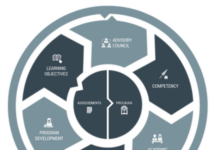
2020: Goodbye – and don’t come back
What a terrible year. 1.63 million horrible, choking deaths from the coronavirus, and 73 million infected to date. Families separated; the elderly and homeless dying alone; the poor, essential workers, and minorities most affected. And all this on top of the usual, annual crises of war, refugees, the homeless, climate change, and Donald Trump (or Boris and Brexit, if you are British). Yet there is hope.
A good year for online learning?
If I look very narrowly at the world of online learning, I believe it has in the end come well through the pandemic.
Saving the academic year
The Canadian post-secondary system at least showed tremendous flexibility and resilience. In a period of two weeks or so in March, 100,000 instructors in universities and colleges pivoted and shifted all their courses to emergency remote learning – which meant in nearly all cases some form of online delivery.
For most, this meant learning new skills and teaching at least somewhat differently. There were no walk-outs or strikes, and although instructors were certainly not happy with the situation, almost without exception they responded willingly to the effort to carry on so their students could complete the Spring 2020 semester.
This was then followed by an intense summer in which many instructors went through some form of training to improve the online learning experience for the fall semester. They were strongly supported by institutional centres for teaching and learning, which ran workshops, one-on-one consultations and developed on-demand resources on online learning that were immediately accessible to instructors. This was likely the most intense and expansive faculty development effort in the history of Canadian post-secondary education.
More learning for instructors continued during the Fall 2020 semester, in which courses were either fully online or with a mix of online and severely restricted campus attendance.
The results were not always pretty, especially in the early days:
- masses of Zoom lectures with little adaptation for students studying in isolation;
- little application of the best practices in online learning, resulting in student dissatisfaction;
- intrusive online proctoring of exams, and concerns about the validity of such online assessment;
- complaints from students (especially but not only in the USA) that they were not getting value for money; many students skipped a year;
- a major financial hit to institutions from the loss of international students
- stress and sometimes burn-out for instructors, support staff and some students.
But the Spring semester was saved, students were able to continue with their education, if in a somewhat attenuated form, and improvements were made for the Summer and especially the Fall semester. Unlike some other sectors of society, higher education, at least in Canada, has staggered through without collapsing, mainly because of the tools available for online learning and the hard work and commitment of everyone.
Probably no one learned as much as our instructors during COVID-19. We also learned that teaching and learning are unlikely to go back to where they were pre-pandemic. However, some hard lessons have been learned.
10 Lessons for a Post-Pandemic World from Covid-19 for Canadian universities and colleges.
I wrote about about the 10 lessons learned in October for Contact North. These were based on just over a dozen ‘quick and dirty’ research studies, some conducted by the Canadian Digital Learning Research Association:
1.Online and blended learning will increase substantially post-COVID-19
2. Support for instructors is essential for quality online learning
4. COVID-19 showed the need for more flexible assessment methods
5. COVID-19 resulted in innovative teaching, but will it stick?
7. More attention needs to be paid to online access and equity
8. We need more flexible learning spaces
9. Lessons learned for administrators
10. We need more (and better) data
What next?
It is unlikely, at least here in Canada, that we will return to full availability of the campus for teaching and learning before the Summer semester of 2021, if then. Although the vaccine is coming, it is initially in small quantities, and it is unlikely that herd immunity will be reached until the beginning of the 2021-22 academic year.
Institutions need to use this time to do some planning for the future, and try to answer some of the following questions:
- how can we make our institutions more resilient, so we can handle emergencies better?
- where do we want to be in five years time with our teaching? What do we need to do to move the institution in this direction?
- for most programs: what is going to be the best mix of face-to-face and online teaching for this program over the next few years?
- how do we best address coming and current changes in the external environment, such as the need for a greater focus on developing 21st century skills and more flexible credentialing for the coming growth in lifelong learning? What role can digital learning play in these areas?
- how do we ensure that time on campus is used in the best way, when so much can be done online and more conveniently for students?
- what is the best way to support nearly all our instructors in moving to a more blended/online teaching environment? How do we scale up professional development so that all instructors can be supported?
- what should our learning spaces look like? How do we enable students to bring their online work into class? How do we ensure they have the technical facilities and networks in the classroom and elsewhere on the campus that blended learning will need?
- could we offer better and safer alternatives to large lecture classes by re-organising the structure of first and second year classes? in fact, do we need to build large lecture theatres anymore?
- how do we increase the supply of high quality digital open educational resources: can we create resources that can be used in multiple courses and institutions? Who should pay for this and how?
These are questions that would need to have been answered without Covid-19. However these questions become much more urgent now. So at least I am giving you something to think about for 2021 – as if you didn’t already!
I will be missing my family this holiday season (all in the U.K.), but I will have a Zoom connection with them, and I feel immensely lucky to still be healthy and well and living reasonably comfortably at home with my wife – at least, so far. I realise that this is not the situation for many, many people in these difficult times.
So I wish you all a healthy and enjoyable holiday season. Stay safe and well, and see you in 2021.









 Dr. Tony Bates is the author of eleven books in the field of online learning and distance education. He has provided consulting services specializing in training in the planning and management of online learning and distance education, working with over 40 organizations in 25 countries. Tony is a Research Associate with Contact North | Contact Nord, Ontario’s Distance Education & Training Network.
Dr. Tony Bates is the author of eleven books in the field of online learning and distance education. He has provided consulting services specializing in training in the planning and management of online learning and distance education, working with over 40 organizations in 25 countries. Tony is a Research Associate with Contact North | Contact Nord, Ontario’s Distance Education & Training Network.

